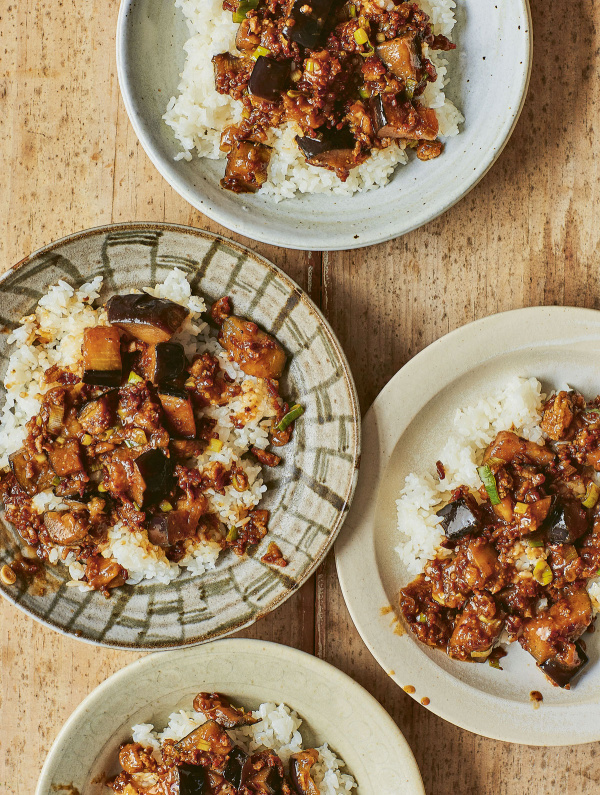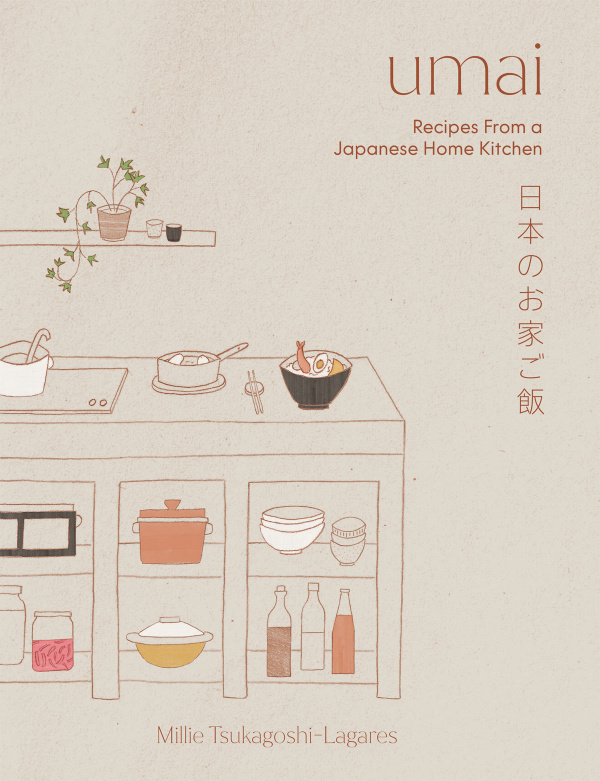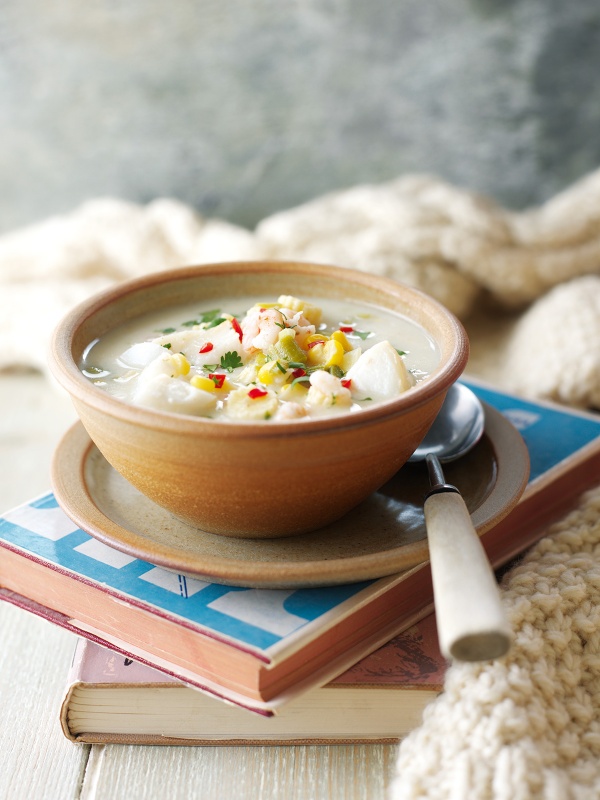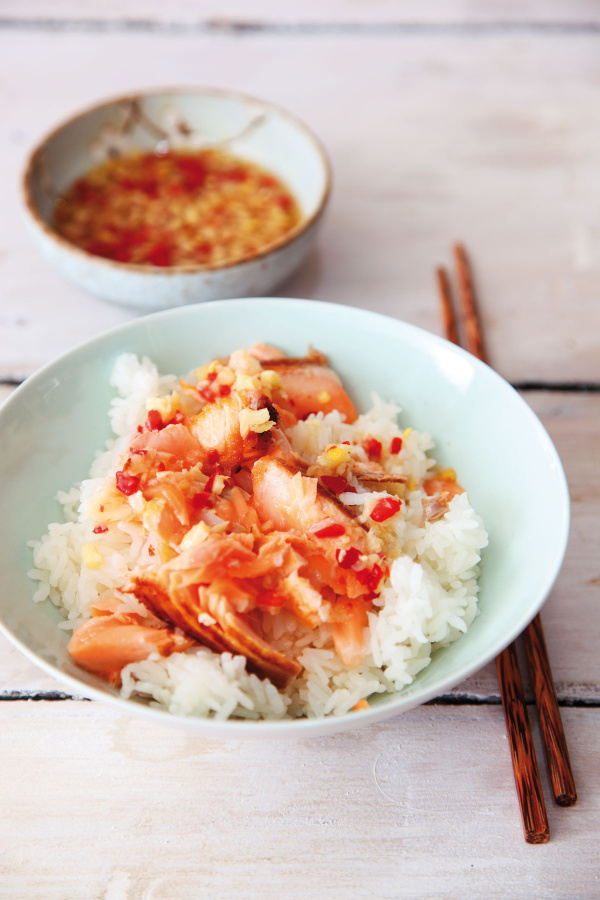Mabo Nasu
by Millie Tsukagoshi Lagares, featured in Umai Published by QuadrilleIntroduction
This is a Japanified rendition of the Chinese dish mapo tofu, but the Japanese version is more savoury and salty, with a slightly thicker sauce. It’s a strong contender for weekly dinner rotations, depending on what you have in your fridge. I love the combination of pork mince and aubergine (eggplant), but it works well with tofu – or make it vegetarian or vegan by omitting the meat and using tofu or vegan mince and substituting vegetable stock powder. It’s a little spicy, very savoury and super saucy, so it’s perfect to top steamed rice and eat with a big spoon.
Negi are a type of Japanese spring onion. If you can’t find them, use spring onions (scallions) instead. Doubanjiang, also called fermented chilli bean paste or spicy bean paste, is a fiery, savoury paste made from fermented broad (fava) beans. You can find it in Asian supermarkets and in many Western supermarkets.
This is a Japanified rendition of the Chinese dish mapo tofu, but the Japanese version is more savoury and salty, with a slightly thicker sauce. It’s a strong contender for weekly dinner rotations, depending on what you have in your fridge. I love the combination of pork mince and aubergine (eggplant), but it works well with tofu – or make it vegetarian or vegan by omitting the meat and using tofu or vegan mince and substituting vegetable stock powder. It’s a little spicy, very savoury and super saucy, so it’s perfect to top steamed rice and eat with a big spoon.
Negi are a type of Japanese spring onion. If you can’t find them, use spring onions (scallions) instead. Doubanjiang, also called fermented chilli bean paste or spicy bean paste, is a fiery, savoury paste made from fermented broad (fava) beans. You can find it in Asian supermarkets and in many Western supermarkets.

Share or save this
Ingredients
Serves: 4
- 1 tablespoon neutral oil such as rapeseed (canola) or sunflower, or more as needed
- 100 grams minced pork
- 4 small aubergines (or 100g/3½oz firm tofu, cut into cubes)
- 1 clove garlic (finely grated)
- 2 centimetres fresh root ginger (finely grated)
- ½ negi or spring onion (finely sliced)
- 1 teaspoon cornflour
- 1 teaspoon toasted sesame oil
- steamed rice (to serve)
FOR THE SAUCE
- 1 tablespoon brown miso
- 1½ tablespoons doubanjiang
- 1 teaspoon soy sauce
- 1 teaspoon sugar
- 1 teaspoon powdered chicken stock or vegetable stock
FOR THE STEAMED RICE
- 285 grams white rice (ideally Koshihikari)
- 1 tablespoon neutral oil such as rapeseed (canola) or sunflower, or more as needed
- 3½ ounces ground pork
- 4 small eggplants (or 100g/3½oz firm tofu, cut into cubes)
- 1 clove garlic (finely grated)
- ¾ inch fresh root ginger (finely grated)
- ½ negi or scallion (finely sliced)
- 1 teaspoon cornstarch
- 1 teaspoon toasted Asian sesame oil
- steamed rice (to serve)
FOR THE SAUCE
- 1 tablespoon brown miso
- 1½ tablespoons doubanjiang
- 1 teaspoon soy sauce
- 1 teaspoon sugar
- 1 teaspoon powdered chicken broth or vegetable stock
FOR THE STEAMED RICE
- 1½ cups white rice (ideally Koshihikari)
Method
Mabo Nasu is a guest recipe by Millie Tsukagoshi Lagares so we are not able to answer questions regarding this recipe
- For the sauce, put the miso, doubanjiang, soy sauce, sugar and powdered stock in a bowl with 200ml (7fl oz/scant 1 cup) water, mix well and set aside.
- Heat the oil in a frying pan (skillet) over a medium heat. Add the pork and cook, stirring, until browned and crispy and the fat has rendered out, about 5 minutes. transfer the pork to a plate using a slotted spoon, leaving the oil behind in the pan. Add the aubergine and cook gently, turning until browned all over and meltingly tender, about 6–8 minutes. Add a touch more oil to the pan, if needed.
- Return the pork to the pan and add the garlic and ginger. Stir gently so as not to break up the aubergines and cook for 2–3 minutes until fragrant. Stir the sauce mixture into the pan and let it simmer for 2–3 minutes, then add the negi and cook for a further 5 minutes until the sauce has reduced.
- Mix the cornflour with 2 tablespoons of water and add to the pan, mixing gently. Let it simmer for 2–3 minutes until thickened, then stir in the sesame oil. Serve immediately alongside a pile of steamed rice.
For the steamed rice
- Put the rice in a sieve (strainer) and rinse under cold running water. You can be fairly rough in the way you do this, working in circular motions both ways and every so often scrunching the rice to remove as much starch as you can. Rinse and drain the rice 3–5 times until the water runs fairly clear, then drain thoroughly and transfer to a saucepan that has a tight-fitting lid.
- Add 400ml (14fl oz/1¾ cups) water to the pan and put the lid on. Let the rice soak in the water for 30 minutes before you start to cook. With the lid still firmly on, turn the heat to high. When you hear it boiling, turn it down to the lowest heat. Let it simmer for 12 minutes, then turn the heat off.
- Keep the lid on for a further 15 minutes, so the rice steams, then take the lid off and mix it gently with a rice paddle or wooden spoon that’s been soaked in water.
- Serve immediately. If you’re not eating it straight away, spread it out on a clean work surface to cool it down quickly, then portion up in cling film (plastic wrap) and store in the fridge for up to 3 days. Alternatively, place in a freezer-safe container and freeze for up to 1 month.
- For the sauce, put the miso, doubanjiang, soy sauce, sugar and powdered stock in a bowl with 200ml (7fl oz/scant 1 cup) water, mix well and set aside.
- Heat the oil in a frying pan (skillet) over a medium heat. Add the pork and cook, stirring, until browned and crispy and the fat has rendered out, about 5 minutes. transfer the pork to a plate using a slotted spoon, leaving the oil behind in the pan. Add the eggplant and cook gently, turning until browned all over and meltingly tender, about 6–8 minutes. Add a touch more oil to the pan, if needed.
- Return the pork to the pan and add the garlic and ginger. Stir gently so as not to break up the eggplants and cook for 2–3 minutes until fragrant. Stir the sauce mixture into the pan and let it simmer for 2–3 minutes, then add the negi and cook for a further 5 minutes until the sauce has reduced.
- Mix the cornstarch with 2 tablespoons of water and add to the pan, mixing gently. Let it simmer for 2–3 minutes until thickened, then stir in the sesame oil. Serve immediately alongside a pile of steamed rice.
For the steamed rice
- Put the rice in a sieve (strainer) and rinse under cold running water. You can be fairly rough in the way you do this, working in circular motions both ways and every so often scrunching the rice to remove as much starch as you can. Rinse and drain the rice 3–5 times until the water runs fairly clear, then drain thoroughly and transfer to a saucepan that has a tight-fitting lid.
- Add 400ml (14fl oz/1¾ cups) water to the pan and put the lid on. Let the rice soak in the water for 30 minutes before you start to cook. With the lid still firmly on, turn the heat to high. When you hear it boiling, turn it down to the lowest heat. Let it simmer for 12 minutes, then turn the heat off.
- Keep the lid on for a further 15 minutes, so the rice steams, then take the lid off and mix it gently with a rice paddle or wooden spoon that’s been soaked in water.
- Serve immediately. If you’re not eating it straight away, spread it out on a clean work surface to cool it down quickly, then portion up in cling film (plastic wrap) and store in the fridge for up to 3 days. Alternatively, place in a freezer-safe container and freeze for up to 1 month.






Tell us what you think
Thank you {% member.data['first-name'] %}.
Explore more recipesYour comment has been submitted.